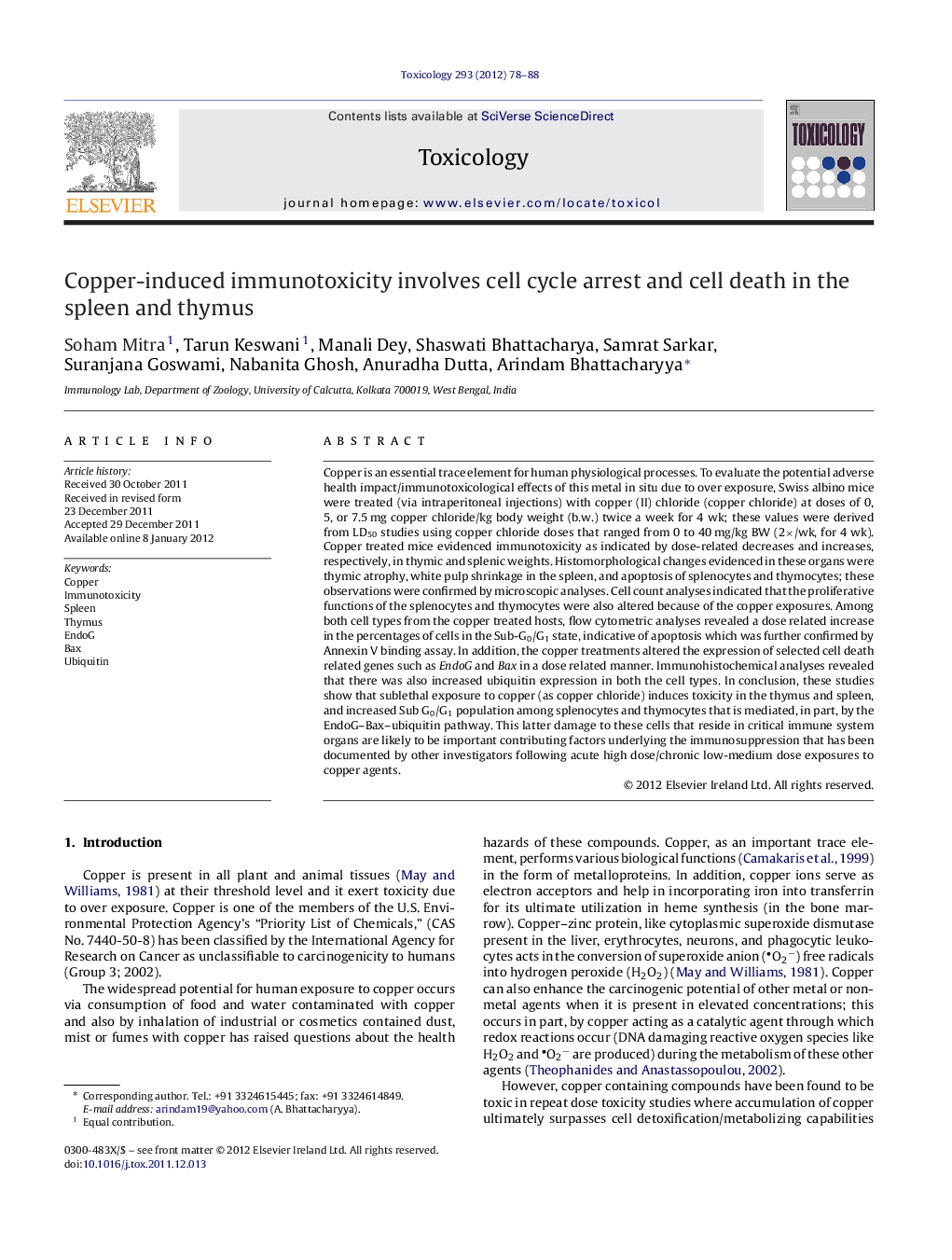| کد مقاله | کد نشریه | سال انتشار | مقاله انگلیسی | نسخه تمام متن |
|---|---|---|---|---|
| 2595969 | 1562364 | 2012 | 11 صفحه PDF | دانلود رایگان |

Copper is an essential trace element for human physiological processes. To evaluate the potential adverse health impact/immunotoxicological effects of this metal in situ due to over exposure, Swiss albino mice were treated (via intraperitoneal injections) with copper (II) chloride (copper chloride) at doses of 0, 5, or 7.5 mg copper chloride/kg body weight (b.w.) twice a week for 4 wk; these values were derived from LD50 studies using copper chloride doses that ranged from 0 to 40 mg/kg BW (2×/wk, for 4 wk). Copper treated mice evidenced immunotoxicity as indicated by dose-related decreases and increases, respectively, in thymic and splenic weights. Histomorphological changes evidenced in these organs were thymic atrophy, white pulp shrinkage in the spleen, and apoptosis of splenocytes and thymocytes; these observations were confirmed by microscopic analyses. Cell count analyses indicated that the proliferative functions of the splenocytes and thymocytes were also altered because of the copper exposures. Among both cell types from the copper treated hosts, flow cytometric analyses revealed a dose related increase in the percentages of cells in the Sub-G0/G1 state, indicative of apoptosis which was further confirmed by Annexin V binding assay. In addition, the copper treatments altered the expression of selected cell death related genes such as EndoG and Bax in a dose related manner. Immunohistochemical analyses revealed that there was also increased ubiquitin expression in both the cell types. In conclusion, these studies show that sublethal exposure to copper (as copper chloride) induces toxicity in the thymus and spleen, and increased Sub G0/G1 population among splenocytes and thymocytes that is mediated, in part, by the EndoG–Bax–ubiquitin pathway. This latter damage to these cells that reside in critical immune system organs are likely to be important contributing factors underlying the immunosuppression that has been documented by other investigators following acute high dose/chronic low-medium dose exposures to copper agents.
Journal: Toxicology - Volume 293, Issues 1–3, 11 March 2012, Pages 78–88